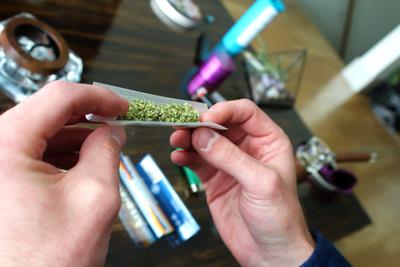
Tuesday November 28, 2017
 420 Culture
420 Culture
With the popularity of cannabis increasing (or at least becoming safer to talk about), people are noting a huge discrepancy between cannabis of yesteryear and the cannabis of today. So, what is it about cannabis today? Is marijuana really stronger than it was 50 years ago? The simple answer is yes, and it’s all thanks to science.
Why is Marijuana More Potent Today?
Back in the 1960s and 70s, marijuana was basically just a hodge-podge of the whole plant – some of it got you high, but a lot of it was just fan leaves, stems and seeds. Because there are minimal cannabinoids on these parts of the plant, more was required to feel the desired effects.
Hydroponic cannabis cultivation became popular in the 1970’s due to many factors including the invention of high intensity discharge (HID) grow lights and Nixon’s crack-down on the Mexican border, which gave home growers an opportunity to study their plants and perfect their growing techniques. Growers learned that flowers are the sole source of cannabinoids and terpenes, and began trimming unnecessary foliage away and learning ways to omit seeds. Many passionate home growers also turned to cross-breeding as a way to fine-tune their favorite strains even farther.
Genetic Manipulation for Potency and Effects
Cross-breeding cannabis is a popular way to create new and unique strains by selecting two plant “parents” – a male to pollinate a female – then growing the seeds, selecting only those with the most favorable traits to continue.
The process can take years (and many generations of cannabis plants) to perfect, but the results are well worth it.
Now, thanks to years of meticulous breeding, we have access to thousands of cannabis strain types each with different potencies, chemical compositions and flavor profiles. The wide range of terpenes and cannabinoids found in these strains are a large part of what makes each cannabis experience so different – lemon-flavored strains may be more invigorating while musky strains will likely be more sedating, for example – and it is because of this that cannabis has such a wide range of therapeutic applications.
Consumers can choose from strains carefully cultivated to produce a myriad of effects on the body. Those who experience anxiety when high may have better luck switching to a strain that is low in THC (the main psychoactive chemical in marijuana) and high in CBD, a non-psychoactive cannabinoid with huge medical potential. Strains with a spicy, peppery flavor like White Fire OG or Lamb’s Bread are also great strains for those prone to anxiety. Likewise, people who experience high levels of chronic pain or inflammation may need more potent, concentrated forms of cannabis to receive the therapeutic benefit despite an increased tolerance level.
Cultivation and Processing Practices that Increase Potency
No, today's cannabis is not laced with any chemicals to increase potency. In fact, the potency of cannabis can be improved using a few simple grow techniques including careful nutrition regimens (like reduced nitrogen during the flowering phase), temperature control (lower temps encourage the production of trichomes) and handling procedures.
Cannabis product manufacturers have also found ways to increase potency through cannabinoid concentration. New technology has created numerous ways to extract cannabinoids from the cannabis plant leaving only the most medically-potent product behind. Cannabis concentrates come in a wide variety of consistencies and are used in many different infusions, such as tinctures, topicals or foods to create potent edibles.

Speaking of edibles, professionally-produced marijuana edibles also tend to be more potent than in the past, largely due to the realization that cannabis is most potent once decarboxylated. Edible manufacturers have been able to use de-carbed cannabis to create extremely potent edibles that can stay active in the body for many hours. Though this can be very beneficial to those seeking extended relief, it can also be uncomfortable for those with a sensitivity to cannabinoids or otherwise infrequent consumers.
Always be mindful of your dosing to ensure you experience positive effects.
Cannabis Potency Testing Helps Consumers Medicate Effectively
Gone are the days when one would eat a cannabis brownie and hope for the best. Cannabis legalization has created a marketplace designed for all cannabis consumers – novice and frequent consumers alike – and helps patients fine-tune their experience based on their needs. Novice consumers, for example, can choose low potency strains or edibles that focus on their specific needs while experienced consumers can find products that still work for them despite a higher tolerance level.
Make no mistake about it, cannabis is definitely stronger today than it was in the past, but that’s not necessarily a bad thing. Thanks to advancements in the industry (and a better understanding of the plant itself), cultivators and product manufacturers have been able to fine-tune their cannabis products to fit the needs of a huge audience, and not just people wanting to “get high” either.
Have you compared the cannabis of yesteryear with today’s pot products? What do you think of the difference?







